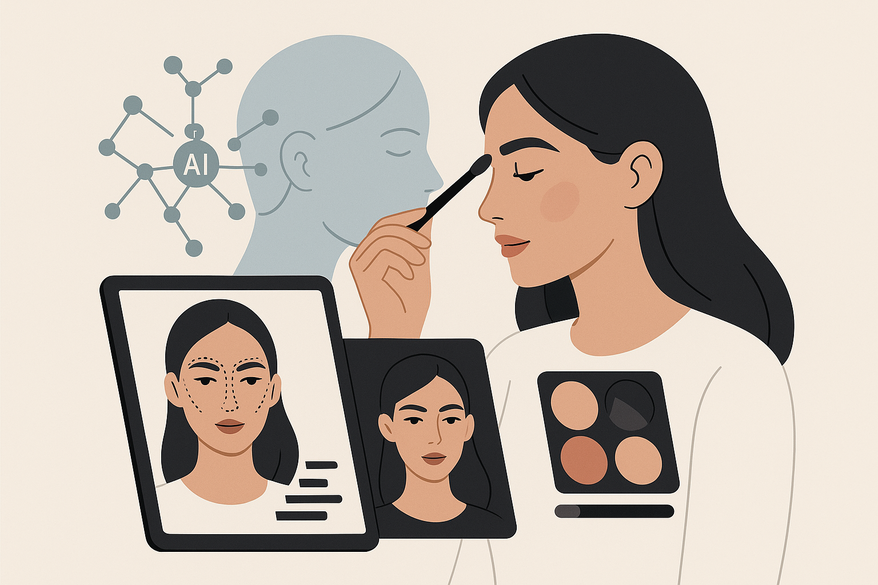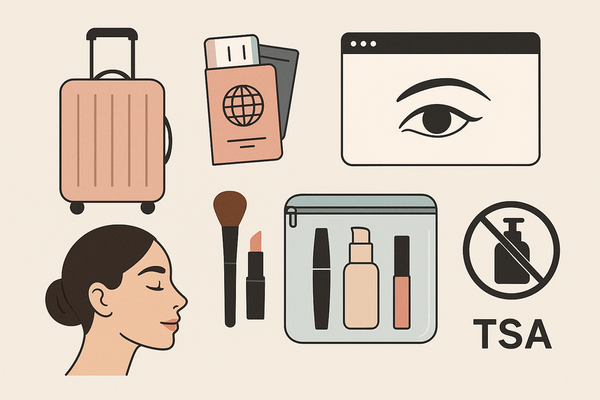Understanding AI Makeup Metrics: How AI Evaluates Your Makeup and the Role of an AI Makeup Generator
Discover how understanding AI makeup metrics revolutionizes the beauty industry by evaluating makeup application and creating personalized looks using AI technology.

Estimated reading time: 8 minutes
Key Takeaways
- AI evaluates makeup through objective metrics like color match, texture, coverage, and blend quality.
- An AI makeup generator leverages these metrics to synthesize personalized looks.
- Deep-learning models trained on diverse, annotated datasets ensure accuracy across skin tones and lighting conditions.
- Practical use cases include virtual try-ons, enhanced product development, and reduced return rates.
Table of Contents
- Introduction
- Background on AI and Makeup
- Deep Dive into AI Makeup Metrics
- Understanding How AI Determines Makeup Scores
- Exploring the AI Makeup Generator
- Practical Applications and User Benefits
- Futuristic Trends
- Conclusion
- Additional Resources and Further Reading
Introduction
Understanding AI makeup metrics means learning how artificial intelligence assigns objective scores to makeup application and formulation. An AI makeup generator is an emerging tool that uses these metrics to recommend or even synthesize custom looks. Together, they are revolutionizing product development, consumer experience, and professional services in the beauty industry.
In this post, we’ll break down step-by-step how AI captures, analyzes, and scores makeup. Then we’ll explore how an AI makeup generator leverages those scores to create personalized looks.
Background on AI and Makeup
AI in Beauty
- Definition of AI: Computer systems capable of human-like tasks—pattern recognition, decision-making, data analysis.
- Role in cosmetics evaluation:
- Virtual try-on apps that overlay lipstick and eyeshadow in real time
- Skin analysis tools that detect issues like dryness or redness
- Shade matching engines for foundation and concealer
Technology Evolution
- Early days: Facial detection algorithms located eyes, lips, and skin regions for simple shade matching.
- Modern era: Deep-learning models trained on millions of annotated images to evaluate makeup quality, skin health, and mood-driven color recommendations.
- As part of “understanding AI makeup metrics,” these models evolved from pixel-based comparisons to multi-dimensional analyses of color, texture, and blending.
Deep Dive into AI Makeup Metrics
Makeup Metrics Defined
Makeup metrics are quantifiable measures that AI uses to assess makeup application quality and product suitability (learn more on understanding makeup score). They matter because they deliver objective standards, enable personalization at scale, and ensure consistency across diverse skin tones and demographics.
Why They Matter
- Objective standards replace subjective judgments.
- Scalability: Millions of users receive consistent feedback.
- Personalization: Tailored recommendations based on individual features.
Core Components
- Color matching – Measures how closely foundation, lipstick, or eyeshadow align with skin tone.
- Texture analysis – Evaluates finish (matte or dewy), smoothness, and evenness.
- Coverage detection – Assesses ability of a product to conceal imperfections or highlight facial features.
- Blend quality – Gauges seamless transitions between shades and layered products.
Data Collection & Machine Learning Processes
- Source annotated images, user feedback surveys, and precise colorimetric readings.
- Train classification and regression models using metrics such as accuracy, precision, and recall.
- Optimize for diversity (varying skin tones, ethnicities) and realism (natural-looking results) using evaluation methods like the Inception Score.
Sources:
Understanding How AI Determines Makeup Scores
Here’s a step-by-step look at how AI assigns scores for makeup application:
- Image Capture
User uploads a selfie or uses a live camera feed via app or website. - Preprocessing
Adjusts lighting, corrects white balance, and normalizes color spaces for consistency. - Feature Extraction
Deep neural networks detect skin tone, undertones, facial landmarks (eyes, lips, cheeks), and any existing makeup. - Application Analysis
Compares detected application against reference “ideal” expert images stored in the model’s database. - Scoring
Assigns numeric values for each component—color match accuracy, blend evenness, coverage level—using model outputs (see how makeup scoring works). - Result Delivery
Presents composite and component scores along with personalized tips for improvement.
Influencing Factors
- Skin tone and undertone detection accuracy
- Environmental lighting and camera quality
- Product formulation compatibility (e.g., matte foundation on oily skin vs. dry skin)
Real-World Examples
- Brand X’s proprietary AI tool achieves a 90% match rate for foundation shades, reducing returns by 25%.
- Virtual lipstick try-on platforms now evaluate application precision to within 2 millimeters of lip boundaries.
Sources:
Exploring the AI Makeup Generator
An AI makeup generator is a system that uses understanding AI makeup metrics to propose or synthesize custom looks tailored to each individual (compare with traditional vs AI makeup).
Workflow
- User inputs preferences (e.g., “warm tones”) or uploads a selfie.
- Generator analyzes facial features, skin data, and current beauty trends.
- AI outputs recommended products, shades, and step-by-step application techniques.
Benefits
- Instant access to a wide variety of curated looks.
- Objective feedback reduces product returns and boosts customer satisfaction.
- Data-driven insights for flawless application, even for beginners.
Limitations
- Accuracy drops under poor lighting or low-resolution cameras.
- Potential bias if training data lacks diverse skin tone representation.
To explore these AI-driven makeup metrics and generation capabilities in action, check out Makeup Check AI.
Practical Applications and User Benefits
Consumers
- Faster, more accurate shade and product matching.
- Reduced guesswork when purchasing foundation, lipstick, or blush.
- Better satisfaction: fewer returns, more confidence in online beauty shopping.
Makeup Artists
- Data-driven insights to tailor services by skin type, tone, and individual preferences.
- Efficient workflows with AI-generated tutorials customized to client faces.
Cosmetic Brands
- Actionable feedback loops to refine formula, packaging, and marketing.
- Lower return rates and higher loyalty through improved first-match recommendations.
Futuristic Trends
- Hyper-personalized makeup tutorials that adapt in real time to changing skin conditions.
- Predictive beauty routines based on seasonal changes, health data, or lifestyle patterns.
- Ultra-realistic AR try-ons powered by generative AI for instant look testing.
Conclusion
AI makeup metrics provide objective, data-backed feedback on color match, blend quality, coverage, and texture. Understanding these metrics empowers both consumers and professionals to make smarter beauty choices. The AI makeup generator bridges expert techniques and personal preference, delivering customized looks at the tap of a screen. Explore these AI-driven tools today to elevate your makeup game with science and precision.
Additional Resources and Further Reading
- Performance metrics for generative AI (Inception Score & image quality)
- Classification metrics underpinning makeup recommendations
- Complete guide to ML performance metrics
- Methods in evaluating foundation model performance
- The tech behind objective beauty assessment
FAQ
How do AI makeup metrics ensure fairness across different skin tones?
By training on diverse datasets that include a wide range of skin tones and ethnicities, AI models learn to assess makeup application accurately and avoid biased results.
Can AI-generated looks be customized in real time?
Yes. Modern AI makeup generators adapt to user feedback and environmental changes—like lighting or skin condition—in real time to refine recommendations.
What data is needed to train an AI makeup generator?
High-quality annotated images, precise colorimetric readings, user feedback, and product formulation details are key inputs for training robust AI systems.
Are AI makeup recommendations safe for sensitive skin?
AI tools can flag potentially irritating ingredients and suggest hypoallergenic alternatives, but users with severe sensitivities should still consult a dermatologist.




